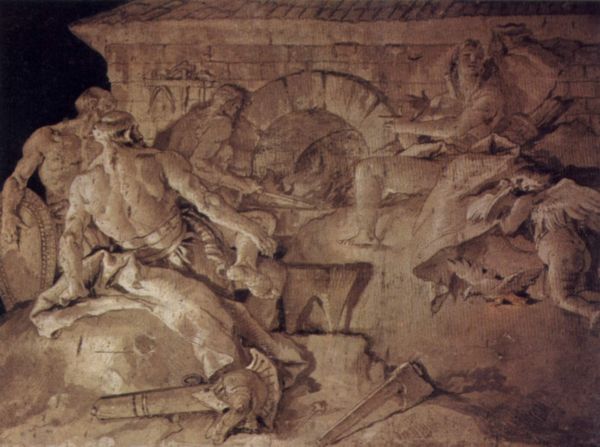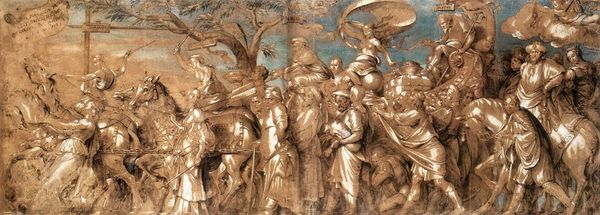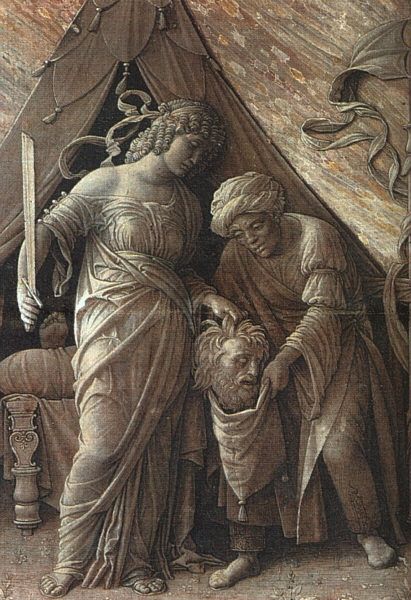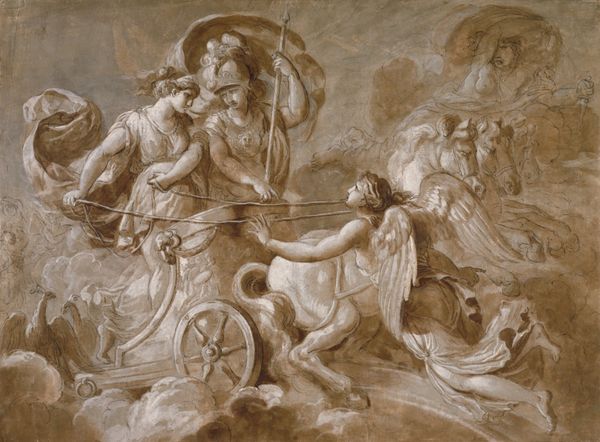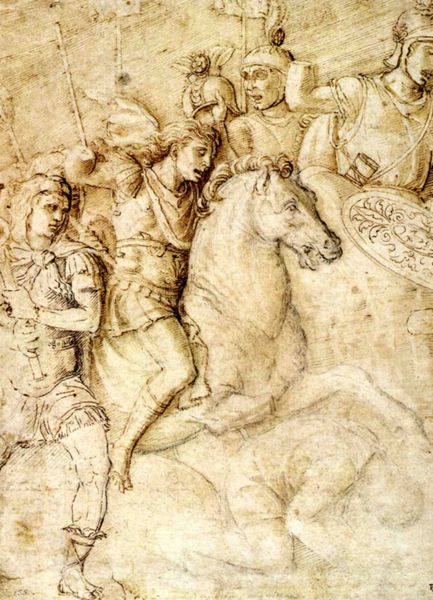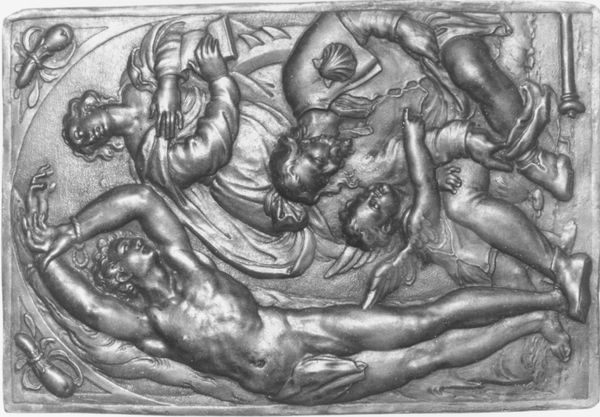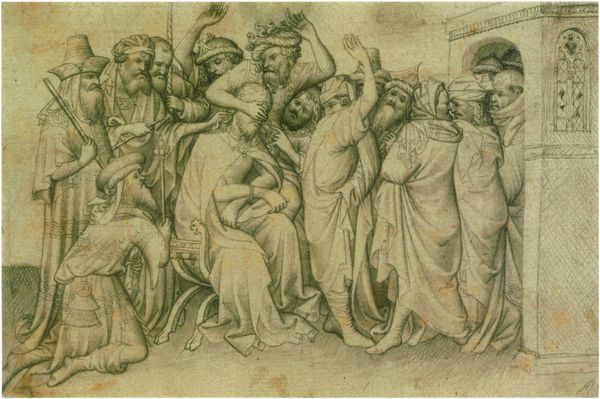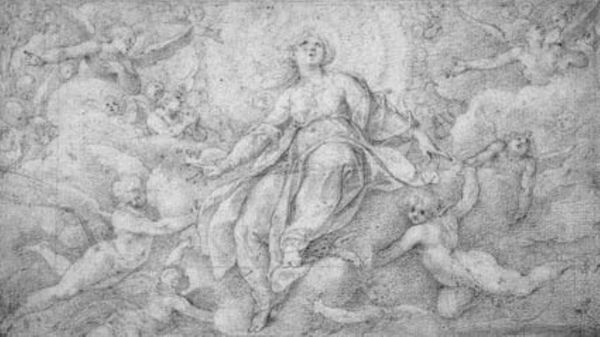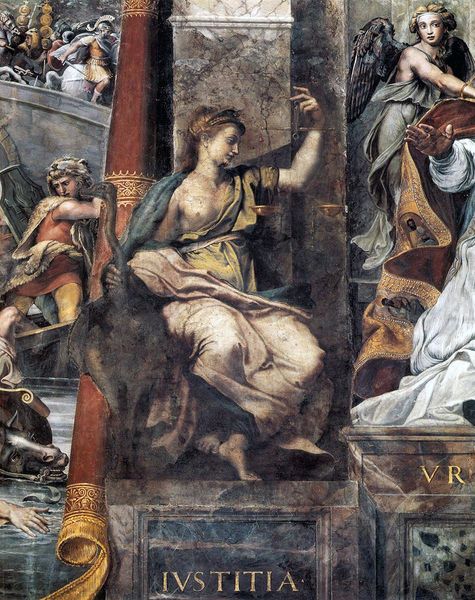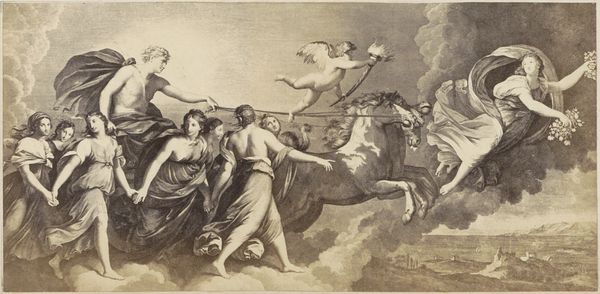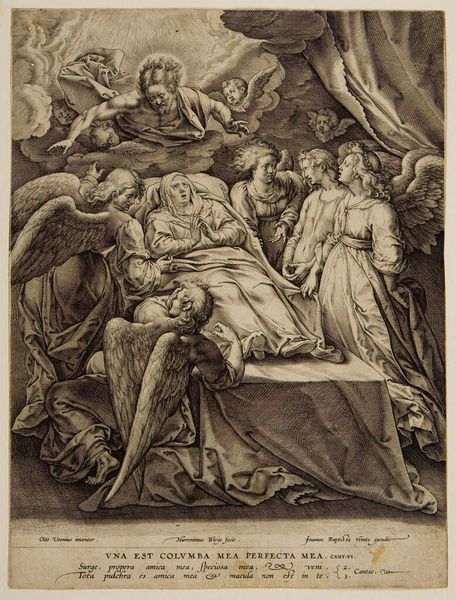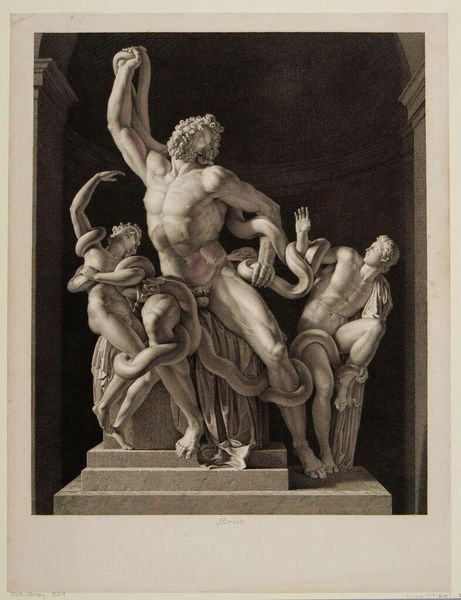
Allegory of Peace Burning Arms 1545
0:00
0:00
sculpture, charcoal
#
allegory
#
sculpture
#
charcoal drawing
#
mannerism
#
figuration
#
oil painting
#
sculpture
#
mythology
#
line
#
charcoal
#
history-painting
#
charcoal
#
italian-renaissance
Copyright: Public domain
Editor: So, this is "Allegory of Peace Burning Arms" created by Francesco de' Rossi, also known as Salviati, around 1545. It looks like it's a sculpture. There's a definite sense of triumph and almost...resignation from the figures below. How do you interpret this work, especially in its historical context? Curator: It’s interesting that you note the sense of triumph. When viewing "Allegory of Peace Burning Arms", it is crucial to analyze it through the lens of 16th-century Italian politics and the artist's own position within it. Notice how Peace, depicted as a powerful woman, literally and figuratively suppresses the instruments of war. The question then becomes, who is she really pacifying, and at what cost? Editor: That's a good question. It seems like the burning of arms is obviously symbolic, but...symbolic of what? Are we talking about genuine peace, or is it more about forced submission? Curator: Exactly! Consider the Mannerist style; the exaggerated figures and dynamic composition aren't just aesthetic choices. They actively contribute to a narrative where power is performative and imposed. To consider this peace as wholly benevolent risks ignoring the realities of the time; the subjugation, silencing, and marginalization of certain voices to maintain a carefully constructed social order. Salviati was deeply embedded in court culture; this imagery may function as justification of hegemonic order. Does that change your view? Editor: It definitely complicates things. It's not just a simple image of peace. There are layers of power and potentially oppression woven into the scene. It makes me think about how even celebrations of peace can be tools of political messaging. Curator: Indeed. This piece urges us to critically examine visual representations of power dynamics, question idealized notions of peace, and uncover silenced perspectives that challenge the dominant narrative. Editor: I’m walking away seeing more than just allegory. It’s a statement about social control. Thank you for providing such deeper context. Curator: And thank you for seeing beyond the surface; that's where the real work of art history begins!
Comments
No comments
Be the first to comment and join the conversation on the ultimate creative platform.
